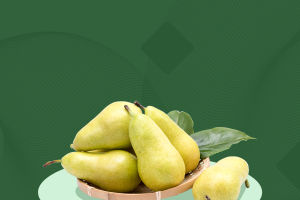Pita Breads
Pitas, or pittas, are the most popular type of bread served in Greek and Middle-Eastern countries . It's dense, chewy, and has a handy pocket to store some extra fillings.
Believed to be much older, pita has fewer ingredients — just flour, salt, water, and yeast — and originates in the Middle East, spreading to the eastern Mediterranean and wheat-eating areas of Europe, Asia, and Africa. The English word, pita, comes from Greek. Pita is easier to make also because it can be made in a modern oven. It’s a little tougher and drier, but when you cut the circle in half, the bread opens into two pockets. Those pouches are ideal for filling with all sorts of meats, vegetables, and sauces, like a sandwich. People love to put falafel inside the pouch.
Though considered a carb-dominant food, pita bread contains 5.5g of protein in a serving, much higher than other grain and cereal products.
It also boasts a whopping 6g of fiber, which helps promote fullness and aid your digestion.
One whole-wheat pita contains 10% of your recommended daily intake for many B vitamins and a load of other essential minerals, like selenium, magnesium, and iron.
Here is a recipe you can try to make pita breads yourself.
INGREDIENTS
Water
2 tsp active dry yeast
½ tsp sugar
3 cups all-purpose flour, divided (or 1 ½ cup all-purpose flour and 1 ½ cup whole wheat flour)
1 to 2 teaspoon kosher salt
2 tbsp extra virgin olive oil, more for the bowl.
INSTRCTIONS
1. Make sponge: In a large mixing bowl add 1 cup lukewarm water and stir in yeast and sugar until dissolved. Add ½ cup flour and whisk together. Place the mixing bowl in a warm place, uncovered to form a lose sponge. Give it 15 minutes or so, the mixture should bubble.
2.Form the pita dough: Now add salt, olive oil and almost all the remaining flour (keep about ½ cup of the flour for dusting later). Stir until mixture forms a shaggy mass . Dust with a little flour, then knead the mixture inside the bowl for about a minute to incorporate any stray bits.
3. Knead the dough: Dust a clean working surface with just a little bit of flour. Knead lightly for a couple minutes or so until smooth. Cover and let the dough rest for 10 minutes, then knead again for a couple more minutes. The dough should be a little bit moist, you can help it with a little dusting of flour, but be careful not to add too much flour.
4.Let the dough rise. Clean the mixing bowl and coat it lightly with extra virgin olive oil and put the dough back in the bowl. Turn the dough a couple times in the bowl to coat with the olive oil. Cover the mixing bowl tightly with plastic wrap then lay a kitchen towel over. Put the bowl in a warm place. Leave it alone for 1 hour or until the dough rises to double its size.
5.Divide the dough. Deflate the dough and place it on a clean work surface. Divide the dough into 7 to 8 equal pieces and shape them into balls. Cover with a towel and leave them for 10 minutes or so to rest.
6. Shape the pitas. Using a floured rolling pin, roll one of the pieces into a circle that's 8-9 inches wide and about a quarter inch thick. It helps to lift and turn the dough frequently as you roll so that dough doesn't stick to your counter too much. (If dough starts to stick, sprinkle a tiny bit of flour). If the dough starts to spring back, set it aside to rest for a few minutes, then continue rolling. Repeat with the other pieces of dough. You have two options for baking the pita from here.
7.To bake pita in the oven: Heat the oven to 475 degrees F and place a heavy-duty baking pan or large cast iron skillet on the middle rack to heat. Working in batches, place the rolled-out pitas directly on the hot baking baking sheet. Bake for 2 minutes on one side, and then, using a pair of tongs, carefully turn pita over to bake for 1 minute on the other side. The pita will puff nicely and should be ready. Remove from the oven and cover the baked pitas with a clean towel while you work on the rest of the pitas.
8. To cook pita on stovetop: Heat a cast iron skillet over medium-high heat. Drizzle a tiny bit of extra virgin olive oil and wipe off any excess. Working with one pita at a time, lay a rolled-out pita on the skillet and bake for 30 seconds, until bubbles start to form. Using a spatula, flip the pita over and cook for 1-2 minutes on the other side, until large toasted spots appear on the underside. Flip again and cook another 1-2 minutes to toast the other side. The pita is ready when it puffs up forming a pocket. Keep baked pita covered with a clean towel while you work on the rest.


